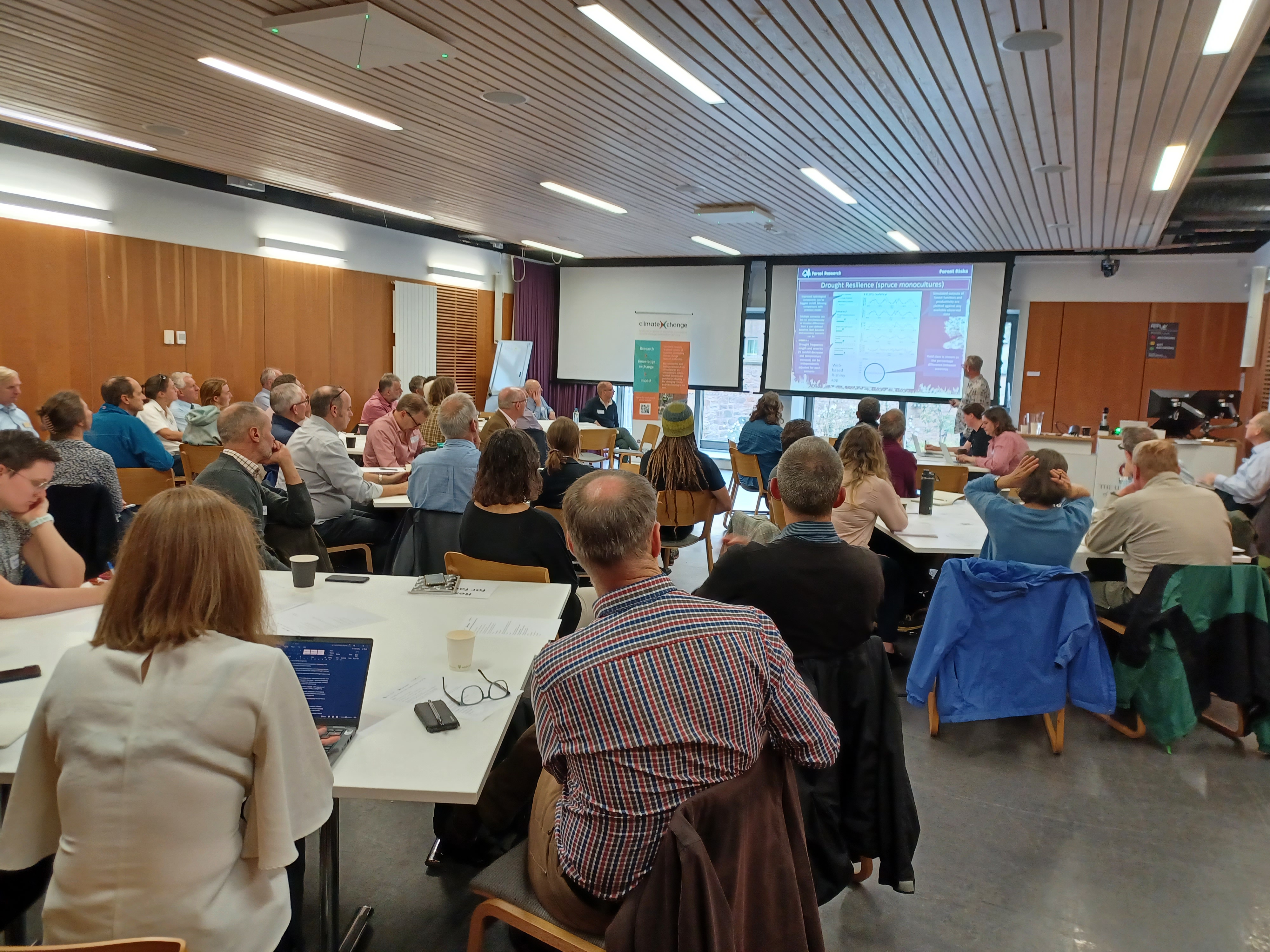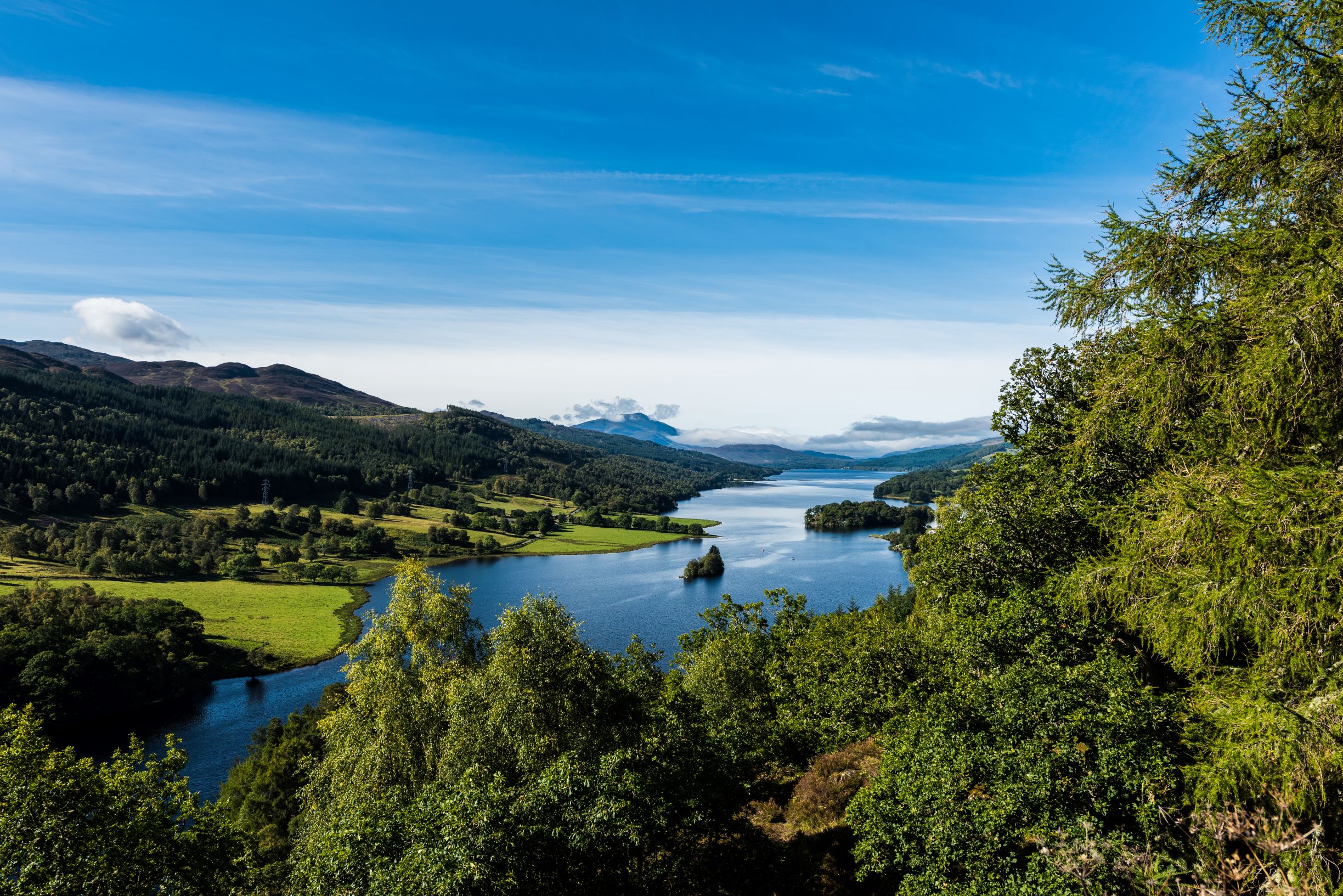13 Oct 2023
BLOG: Future productive species for Scotland
The changing climate is bringing many challenges for the forest industries and woodland owners across Scotland.
We can expect windier and wetter winters and drier and sunnier summers. Added to that, we are facing an increased threat from pests and diseases as Scotland’s climate is altering.
There is no doubt that to ensure our forests are fit for the future then we need to make them more resilient.
Species choice is one fundamental factor in this.
What species should we plant in the future to ensure our forests continue to be productive? That was the key question of a workshop that Scottish Forestry and Forest Research recently held.
We spoke to Helen Sellars, Scottish Forestry’s Head of Sustainable Management, on what the workshop covered and where next.

Why did you have a workshop?
This was to build on discussions held previously at National Forestry Stakeholder and cross-sector Resilience and Adaptation Steering Group meetings.
Both meetings raised the issue of the need to increase our species choice, as diversifying our woodlands was identified as a key priority to help us to build the resilience of our forests and woodlands.
The workshop was organised jointly by Scottish Forestry and Forest Research. It was hosted by climateXchange, with 60 delegates from across the industry.
What was the purpose of the workshop?
The workshop had three aims which were to explore and inform, build understanding and initiate action.
The challenge set out was how to take forward increasing species choice whilst maintaining and enhancing all the current benefits that forests and woodlands provide.
One aim was to start development of a short list of future productive species for Scotland that can then be taken forward. Alongside this we would need to explore and address any constraints such as ensuring seed and plant supply and tree breeding.
What did the workshop cover?
The workshop had expert speakers from Forest Research and Scottish Forestry and began by setting out the threats to our forest resource that come with climate change.
These threats include drought, increased temperature, pest and diseases and increased extreme weather events.
Work on potential future species and their timber properties was also presented, along with current tree breeding programmes, silviculture of growing these species including in mixtures. Part of this included practical case studies which were very useful to see it in action.

What was discussed?
The group discussions drew on the delegates’ knowledge and experience to create a prioritised list of the barriers faced by the industry in using a broader range of species. We also looked at ways we could begin a process on taking forward this action.
Some of the barriers that scored highly were the understanding of the economics around these diverse species, the timber properties and processing, and the adaptability of sawmillers which also aligns with marketability.
Some enablers suggested were the need for more investment in alternative species and tree breeding, such as trials and breeding programmes, and support for seed supply and nurseries.
There was support for Forest Research to capture more knowledge and evidence as the sector tries new things. Delegates also were keen for a greater understanding of risk from pest and diseases and better production forecasting.
Clearer policy direction and grant alignment scored highly in these discussions as did tackling deer. Investment in processing to allow milling of other species and market creation also scored highly.
What about criteria for future species?
Yes, discussions covered the need to develop criteria that could be used to assess the future potential of species, to help us finalise a short list of future productive species that can be prioritised for research and development to support their increased usage.
Some of the criteria that scored highly were future climate suitability, productivity, ease of establishment, pest and disease risk profile, and biodiversity value.
Delegates were asked to suggest species at the end and these were presented on screen as a wordcloud. The species coming out strongly were Douglas fir, Scots pine, Western red cedar, Birch , Aspen and Western hemlock. There was also acknowledgement of improved Sitka Spruce and the key contribution it will continue to make in the future.

What are the next steps?
The results from the workshop will be analysed by Scottish Forestry and Forest Research and discussed by the next Resilience and Adaptation Steering Group.
This group, which consists of a wide range of forestry interests, will inform the process to identify a final short list of future productive species for Scotland and the priority actions needed to enable their use.